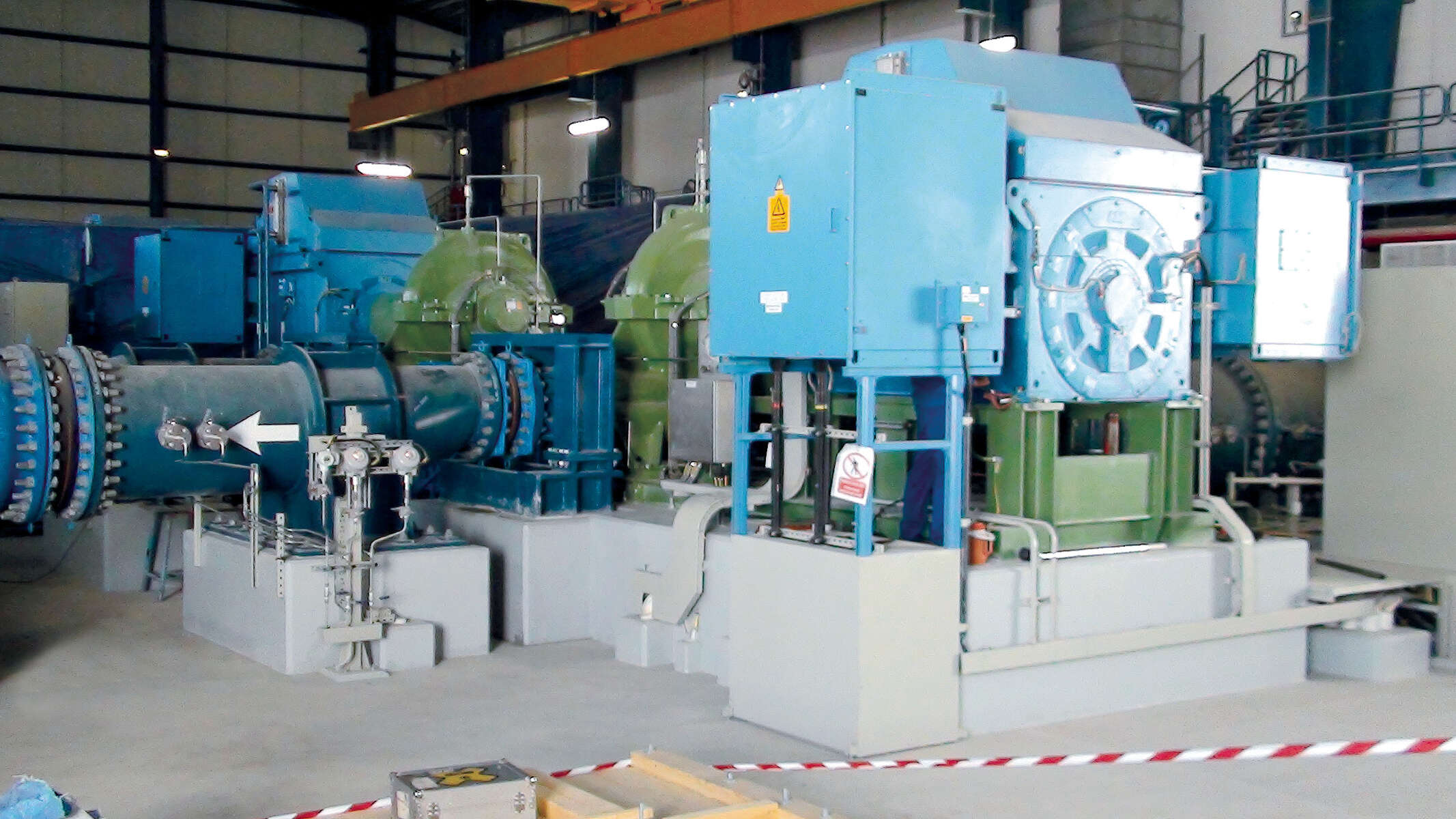
SES System Efficiency Service makes resonant frequencies visible
High vibration levels were occurring at four newly installed variable-speed volute casing pumps in a water transport system when the pumps were operated at high speeds. Experts performed a system analysis to uncover the cause.
High vibration levels were occurring at four newly installed variable-speed volute casing pumps in a water transport system when the pumps were operated at high speeds. Experts performed a system analysis to uncover the cause.
The challenge:
Multi-channel measurement with high sample rate makes vibration behaviour visible
Four pumps of the same type are installed in the water transport system, where they pump drinking water into one common main pipe. Two to three volute casing pumps are operated in parallel on frequency inverters for speed control; one pump is redundant. At low speeds, the vibration values were within the permissible range to DIN ISO 10816/7. However, at high speeds the values increased significantly.
The solution:
Vibration measurement with high sample rate and several measurement channels
Vibration measurement with a high sample rate and several measurement channels initially showed the exact vibration development at several measurement points. The pump's operating range from 500 to 995 rpm (8.3 to 16.5 Hz) met the natural frequency of the system (at approximately 95 Hz). The reason for this was an overlap of the system's natural frequency and the blade passing frequency. This became clear via a frequency analysis. In order to determine further details about the natural frequencies, hammer excitation tests (bump tests) were carried out so that remedial measures could be derived.
The result:
New mountings lower the vibration values
The hammer excitation (bump) tests revealed that various reinforcements could be retrofitted to the frame. In addition, anchorage points were installed upstream and downstream of the pump, resulting in the system's natural frequency to move out of the pump's operating range.
The vibrations in the lower speed range are within the permissible range. However, at speeds from 900 to 995 rpm (increase from 3 to more than 6 mm/s) the vibrations rose significantly at the non-drive end in the vertical direction.
The frequency spectrum at the non-drive end in the vertical direction shows that the excitation is caused by the blade passing frequency (amplification at 950 rpm, 95 Hz).
Data | Facts | Figures
Application: Water transport
Year: 2016
Duration: 3 month
Products used:
4 x RDLO 600-1200 B with 3.9 MW motors
Used products
RDLO
Single-stage axially split volute casing pump for horizontal or vertical installation, with double-entry radial impeller, mating flanges to DIN, EN or ASME.
